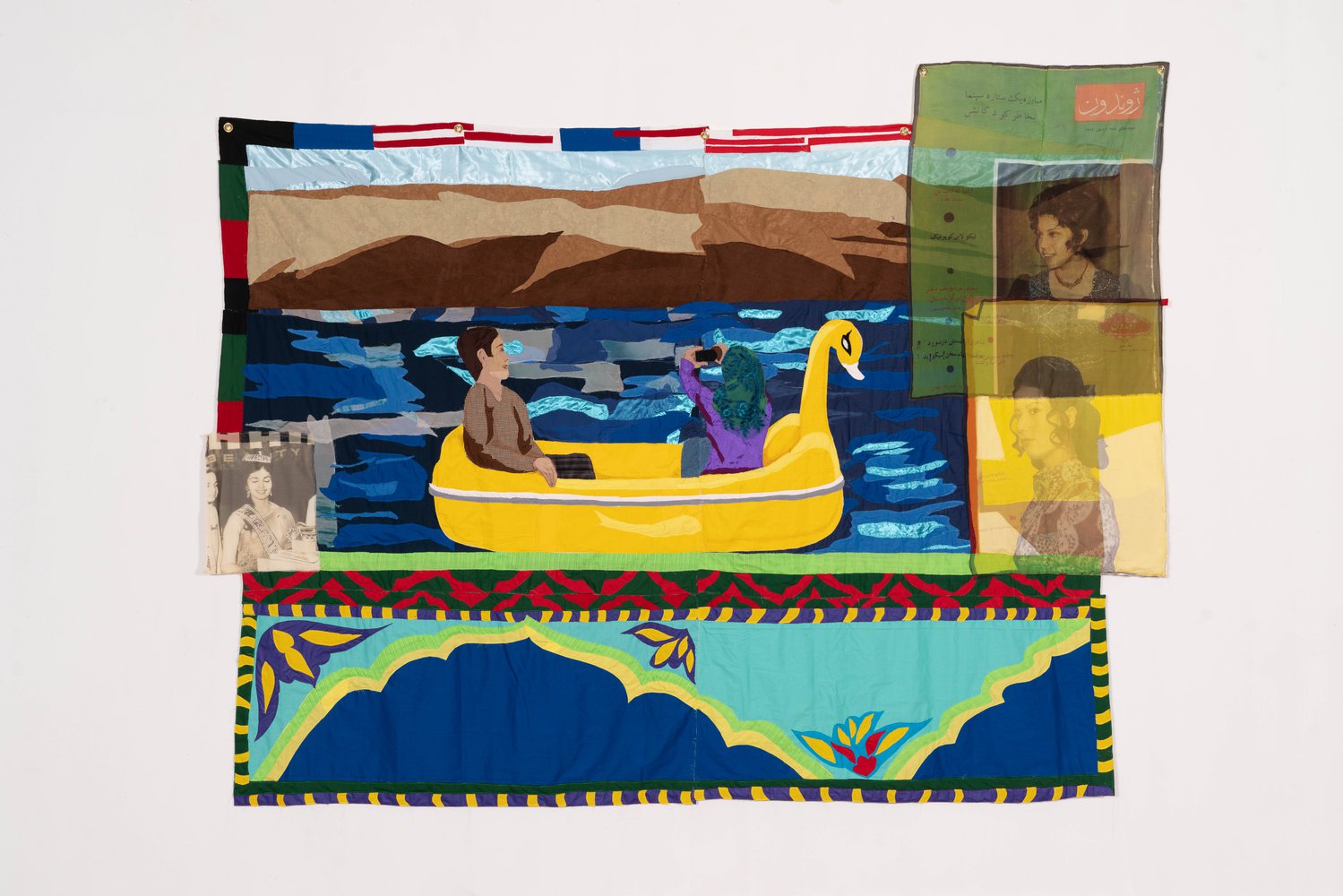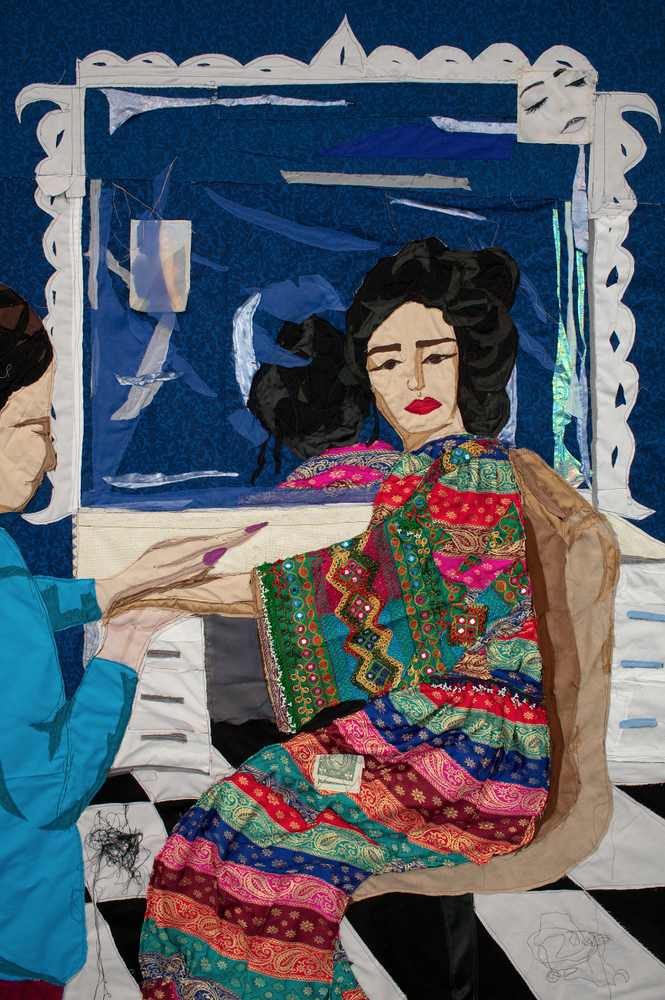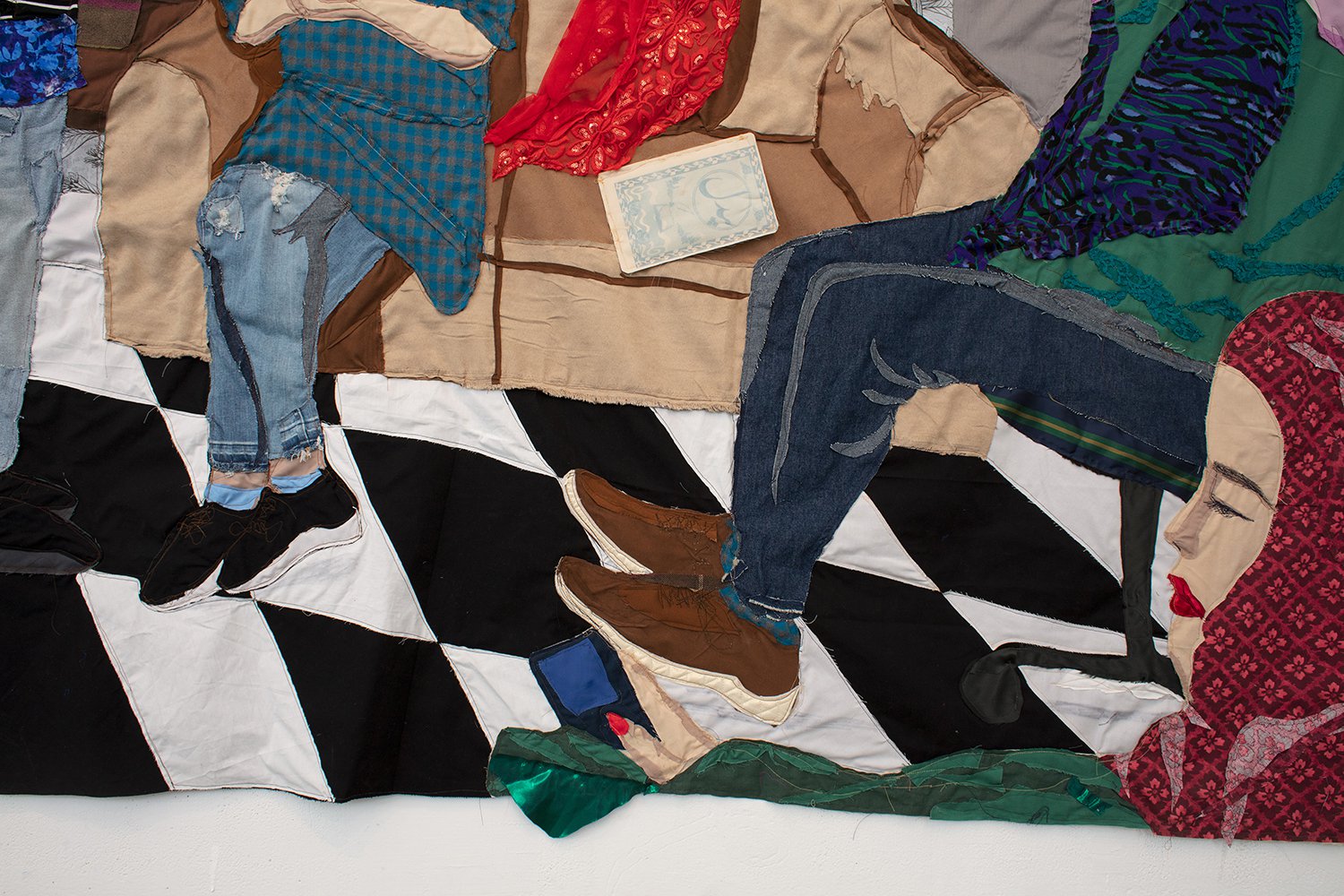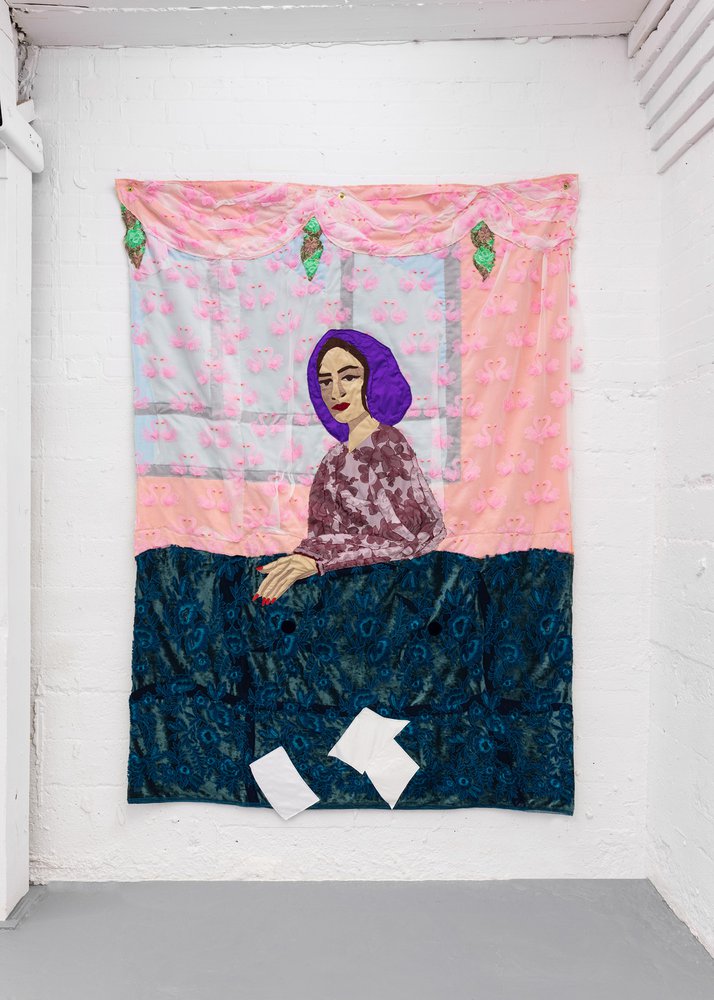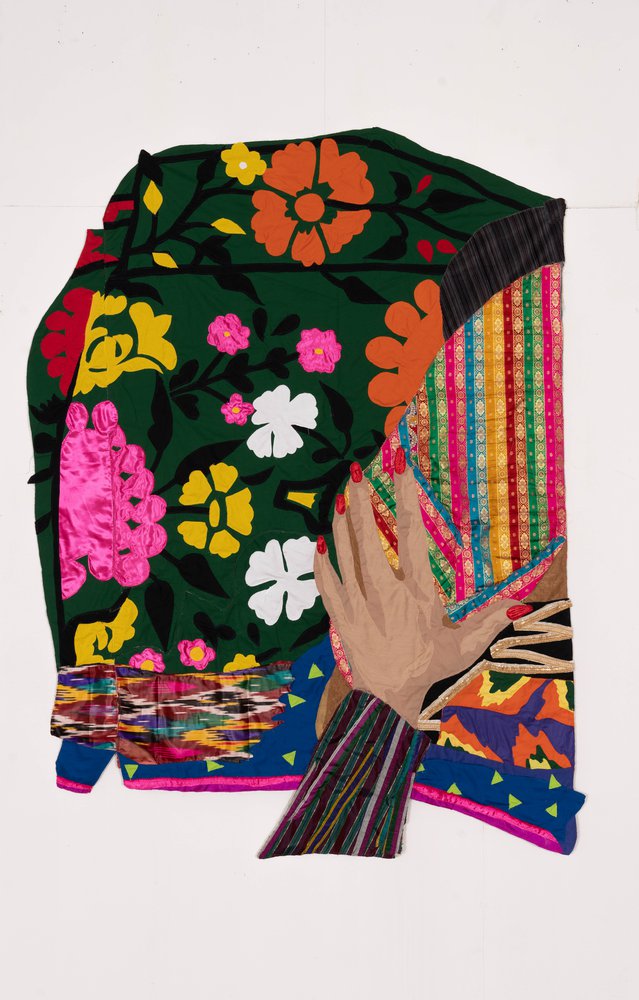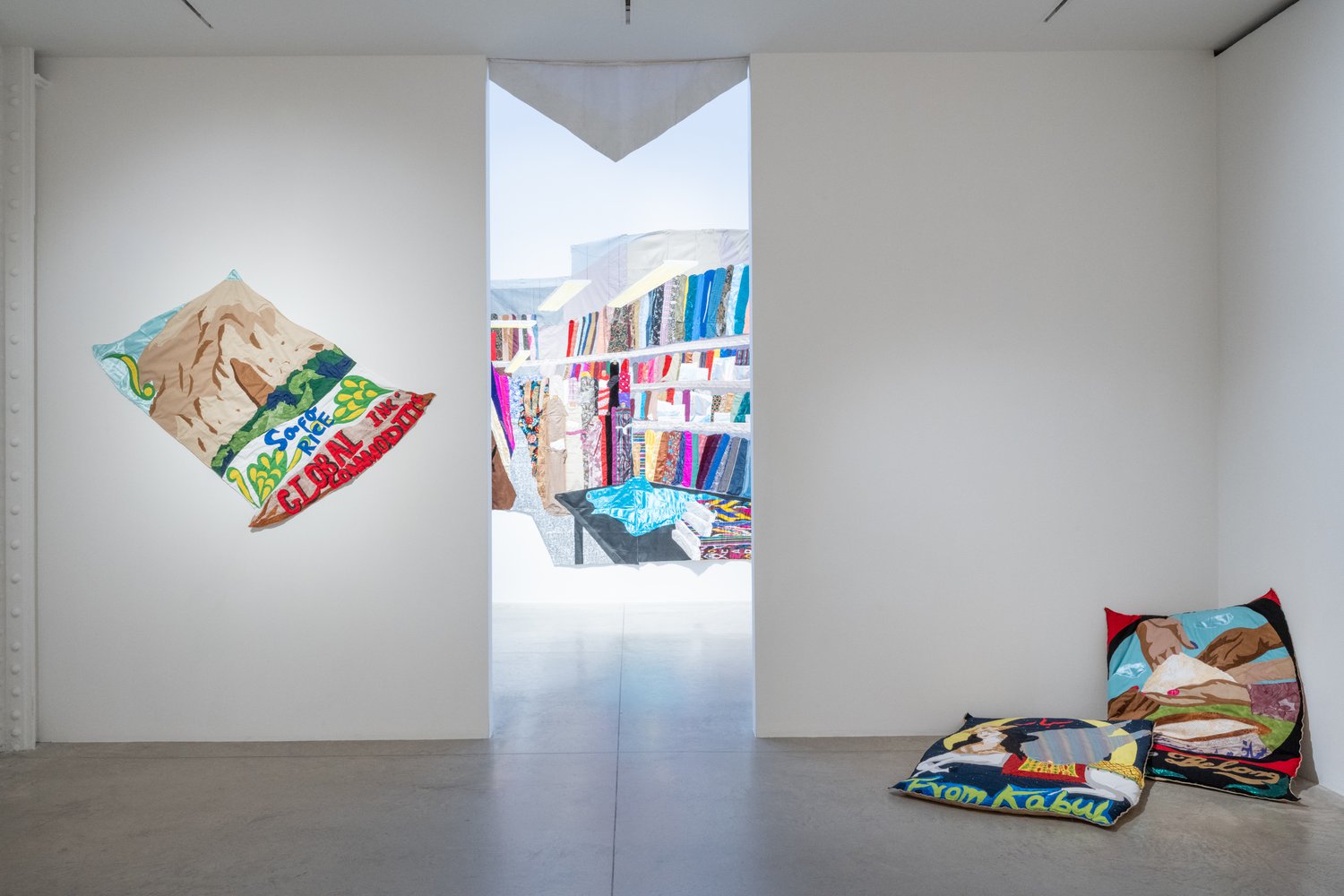The artist
Growing up in Kabul, Afghanistan, Hangama Amiri (b. 1989) would visit her uncle's tailor shop before school to learn about the tools he used to make his garments. Today, the colourful fabrics that surrounded her childhood still vibrate for Hangama with intense feelings of memory, identity and home.
When Hangama was 7-years-old, she and her family were forced to leave Afghanistan because of the Taliban. After living in Pakistan and Tajikistan, they moved to Canada when Hangama was 16-years-old. As a refugee, Hangama's journey has taken her through many challenges, but art gave her a sense of freedom.
'I have this tool to express myself and I express the happy moments, the contemporary voices, the contemporary scenes. It is not all about the misery. My visuals are about hope, about now, about the future'.
Hangama's textile works evoke a personal diaspora as means to investigate the politics of gender in the Afghan culture, while celebrating feminine subjects that have been deemed taboo. The act of sewing different fabric and material together becomes a metaphor for uniting fragmented identities that have had to live in multiple geographies around the world. Displeased by the rectilinear shapes and perfect edges of Western paintings, Hangama was interested in the imperfections and fragmented edges of her memories. Fabric was a way to resolve the issue of strict frames and work beyond them. Consequently, none of her textile pieces have perfect edges.
'They are fragments of memories that I have put together - not a linear narrative that exists within predetermined boundaries'.
Hangama holds and MFA (Master of Fine Arts) in Painting and Printmaking from Yale University (2020). Her colourful textile work has been exhibited across Europe, Canada, and the United States. She has been recipient of multiple awards and grants including the Arts Nova Scotia Grant (2018), a Canadian Fulbright and Post-Graduate Fellow at Yale (2016) as well as the 2011 Lieutenant Governor's Community Volunteerism Award.
GALLERY
Selected works
Spectators of a New Dawn (2021)
In this exhibition, Hangama examines the way in which gender, social norms, and larger geopolitical conflict impacts the daily lives of Afghan women. Inspired by conversations she had with her family and close friends still living in a war-torn Afghanistan, these vivid, richly layered portraits explore the feelings of in-betweenness, fear, longing, love, guilt, loss, and hope. Each piece weaves together interior and exterior social spaces as a way of showing the nuances of their intimate and urban lives, while drawing attention to the precarity of living under the constant threat of social and political upheaval in Afghanistan. "After speaking with them [family and friends] over the past two years, I have found they are predominantly concerned with maintaining their basic human rights and the progress Afghan women have made in education, employment, and overall role in society".
Wandering Amidst the Colours (2021)
For those who immigrate out of their home countries as children, it is difficult and potentially futile to conceptualise home as a specific place. Having left her birthplace, Kabul, as a child due to Taliban and grown up subsequently in Iran, Pakistand, and Tajikistan, Hangama often centers her practice on the effects of geopolitical conflicts and gender norms, evoking a diasporic visuality marked not by loss or precarity but by lush colors and layered sociality. Wandering Amidst the Colours is Hangama's record of her search for liminal spaces in the U.S. that anchor her to Afghanistan, by exploring the concept of home and the idea of home being a feeling or emotion.
Bazaar: A Recollection of Home (2020)
In this project, Hangama is reweaving her childhood memories of the bazaar, transforming and deforming it to offer her viewers a sense of place and time alongside an awareness of the politicised present. Hangama's interest in bazaars as sites of social and economic exchange comes from her childhood experiences in her birthplace Kabul, Afghanistan from 1994-1996, just before the Talbian regime came to power. She works intentionally against the idea of the space of the bazaar as being dominated by men.
'I am revealing the presence of women within these public spaces, which are often ignored in the Western world... I am not, however, interested in depicting women as victims of war or a patriarchal society, but instead as heroines who stand for progress and change'.
Through her work, Hangama wants to project a more hopeful voice in order for it to encourage future generations of Afghan women to bring new representations of the East into being, not for the Western world but for themselves and for their community.
Arayeshgah-e Bahar (Bahar, Beauty Parlor) (2019)
Combining a fashion designer’s toolkit with the history and language of painting, this textile installation creates rich images that place Afghan women at the center. The images are based on Amiri’s visits to beauty salons with her cousins on a trip to Afghanistan in 2012.
'The politics of Afghan beauty is so loaded – outside of the salon, everyone is hidden under the hijab but once they were inside that space, they felt so free'.
Read more
- Article in CBC Arts "Afghan-Canadian artist Hangama Amiri stitches the idea of 'home' into stunning textile portraits" (Exhibition: Spectators of a New Dawn)
- Interview with Amiri in Nero "On memories, bazaars and Afghan feminism: a conversation with Hangama Amiri" (Exhibition: Bazaar. A Recollection of Home)
- 'Artist of the Month' article on the Inspire website.



